Kinwashi Tour Japan Thread
-
-
-
-
-
What Garden.
another new attraction coming.
opening here.
Already saw this from Japan.
-
-
-
http://www.ashikaga.co.jp/index2.html


Flowers and trees of ancient Japan is said to speaking with Fuji, which is also sung Manyoshu.
Noda wisteria species, each color representing Japan, the destination sends flowers to order wisteria wisteria, wisteria purple, Nagato, double-flowered, pale and Shirafuji to all. Wisteria is you can enjoy more than a month and tusks are said to last Fuji in Japan and it is difficult to cultivate (genus laburnum Leguminosae).
Reflected Mizukagami tailoring screen, followed by the pond tunnel of wisteria wisteria wisteria across large double-flowered wisteria rare in the world on three sides and a large tatami 600, freshly garden trees, also 80m (Shirafuji, Kibana Fuji), and is the breathtaking beauty of the night and our Fuji effect, and I do not think about things of this world.


Mid-April, wisteria bloom will celebrate its first flowering in all mortar. And (improved varieties horticulture) Unlike the Red Fuji, Fuji-friendly is the flower of the extent of pale mauve 40cm Noda has been sold throughout the country. Fuji announce the opening of the story is Fujino flowers. Around this time, begin to bloom a few Ofuji wheel.

Degree is called Speaking of purple wisteria.
Ogle like a share a share with a degree of art of tailoring is said to be the original garden art, and the difference reached the-art of flower cluster of 40 ~ 50cm Fuji Fuji Noda, and shelves, solid or different difference between the transmitted (purple, bluish purple, purple and sky blue system) until its beauty is highlighted.




February 1996, the four large wisteria trellis of the garden by our hero on the transfer of 20km, has been planted in the current gap between town Ashikaga Asakura from the town. Flow 10 years, we have been loved by everyone and many of the garden coming after. Also spread to 1,000 square feet of wisteria trellis of 72 m2 more than 10 times 10 years ago, was to become the world's most beautiful wisteria said. We would enjoy the world if it is possible with a fantastic and beautiful this life force.




Shirafuji blooms in third place.
Testimonials standing in front of the tunnel Shirafuji,
voices "Wow beautiful, very beautiful", and also, the voice.
Enjoy most is the moment to feel beautiful about call can not be found other words, it was good to make.Shirafuji road tunnel extends to 80m walk wrapped in a sweet fragrance, friendly, and happy.







Yae wisteria black dragon. Yae is referred to as mutation of Fuji Fuji Fuji Black Dragon of Noda.
Also looks like a bunch of grapes, wisteria scent is strongest, and is said to look a little far from Japan's premier Yae Fuji, Fuji is loved by everyone. Is a sequence of voice say in most wisteria trellis in the center of the park "and I saw for the first time."



It has been said to be distributed in Switzerland laburnum Bosshi genus is referred to as 1965 came to Japan, and Austria.
Laburnum flowers in the genus that combines the biggest flowers and long inflorescence. Are referred to as the "Fuji Kibana" in our garden to take a "Fuji Kibana" alias in Japan. Fujino flowers blooming flower of the end of the story of the wisteria tunnel followed by a tusk over 80m Japan only, from May.
Of about 200 "Fuji Kibana" you can enjoy until after May 20.





-
Okinawa.
source
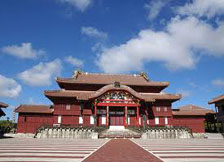
Shuri Castle
UNESCO World Heritage served for the Ryukyu kings for several centuries until Okinawa became a Japanese prefecture in 1879.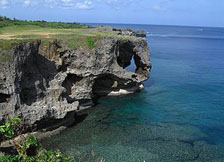
Cape Manza
The name Manza stems from the original Okinawan dialect, meaning ‘big enough for 10,000 men to sit on this field by the cliffs.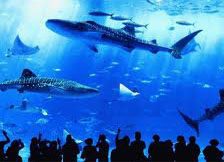
Churaumi Aquarium
One of the biggest and the most impressive aquarium in Japan, showing huge whale sharks(10m), bull sharks(3m), manta rays(7m), green turtles, and many more! -
Nagasaki.
source
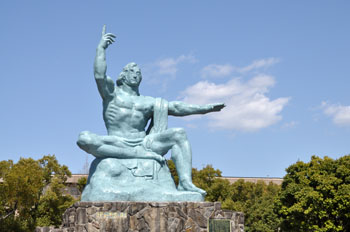
Nagasaki Peace Park
Nagasaki Peace Park was built near the epicenter of the atomic bomb explosion that devastated the city on August 9, 1945. It was made to pass down the painful story of the damages caused by the bombing and to pray for peace to prevail on earth.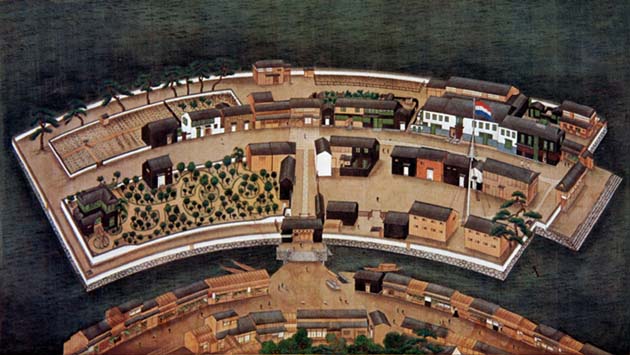
Dejima
When the Dutch trading posts in Hirado were moved to Dejima under the orders of the Edo Shogunate in 1641, the residents of this island changed from Portuguese to Dutch. Dejima turned into a port for Dutch ships and for over 200 years since then, it played the role of Japan’s only gateway to the world.
Glover Garden
Glover Garden is an open air museum, exhibiting mansions of former Western residents of Nagasaki. It is located on the hill where Western merchants settled down after the end of Japan's era of seclusion in the second half of the 19th century. -
Fukuoka and Kumamoto.
source
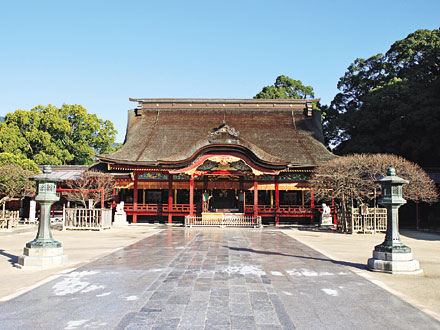
Dazaifu Tenmangu Shrine
It is located outside of Fukuoka City and is Considered as the god of knowledge and the god of calligraphy because Sugawara Michizane, the great poet, scholar and politician of the Heian period of Jan is sacrificed here. A lot of parents visit here praying for the success of their children in passing the University entrance examination.
Kumamoto Castle
It is a hilltop Japanese castle located in Kumamoto City in Kumamoto Prefecture with an alternative name of Ginkgo Castle. It was a large and extremely well fortified castle and is considered one of the three most famous castles in Japan, along with Himeji Castle and Matsumoto Castle.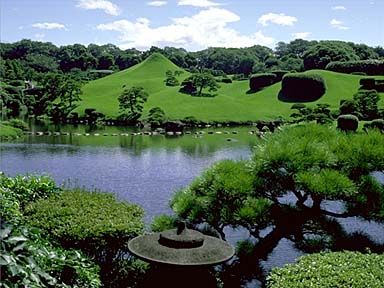
Suizenji Garden
Suizenji Garden is an interesting and much visited venue, featuring miniature landscapes, a temple and small lakes containing large, hungry, and multi-coloured Carp. It is a short tram ride from the city. Lots of shops await the local tourist yen. -
source

Hakutsuru Sake Brewery Museum
Kobe has long been famous as a place for sake production due to the availability of high quality rice and water and its proximity to Kobe Port. You can figure out how to make Japanese traditioanl Sake, and experience real Japanese atmosphere!
Ropeway (Nunobiki Herb Garden)
Panoramic views of the heavily urbanized Kobe city can be enjoyed from the Futatabi mountain range with the pleasant green backdrop.
Kobe Port Cruise
The cruise goes around Kobe Port viewing the beautiful scenery of Kobe city and Rokko mountain range. Why don't you feel the sea breeze with riding on a cruise? -
-
source

Osaka Castle
It is the symbol of Osaka and one of Japan's most famous castles, situating on a plot of land roughly one kilometer square at the centre of Osaka City. There are many souvenir shops in the castle and you can take a picture with Warrior attired staff outside
Dotonbori
It is the city's most famous shopping and entertainment district and is famous for its historic theaters (all gone now), its shops and restaurant.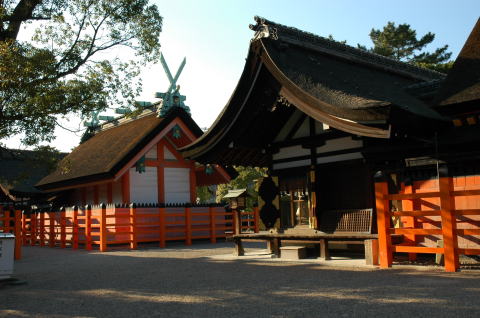
Sumiyoshi Taisha Shrine
One of Japan's oldest shrines founded in the 3rd century, displaying a purely Japanese shrine architecture prototype (sumiyoshi-zukuri).
Shitennoji Temple
Shitennoji is the oldest Buddhism temple in Japan, built in 593 by Prince Shotoku, who first brought in Buddhism to Japan. They were remained the original Asuka period design after carefully reconstruction eventhough several times of fire disaster throughout many centuries.
Floating Garden Observatory (Umeda Sky Buidling)
The spectacular high rise building offers a great view of Osaka city. Two main towers are connected with each other by the "Floating Garden". -

Todai Temple
Todai Temple is the head temple shrine among 68 of Buddism temples in Japan. It has a long history of more than 1200 years until now and Its Buddha Hall is the largest wooden agricultural materpiece in the world.
Nara Park
You can see groups of deer playing in the park .They are protected as National Conservation animal owe to its connection with the legend of white deer. There are attractive landscapes throughout the year.
source
Kasuga Taisha
Kasuga Taisha is a world heritage shrine in Nara Park against the backdrop of Kasuga Mountain. It was constructed by Mr Fujiwara - a nobility member ,in order to offer sacrifice to the Guardian deity of the city and people.
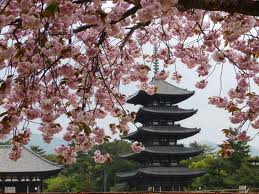
Kofuku Temple
It was built on the year when Nara city was establish as the capital city by the most powerful family of Fujiwara at that time. Among its remained historically significant buildings, a 5-storey pagoda is the tallest one in Japan and it is the symbol of Nara.
Yakushi Temple
Yakushi Temple was constructed by Emperor Tenmu in the late 7th century for the recovery of the emperor's sick wife. There are a lot of visitors from all over the world every year.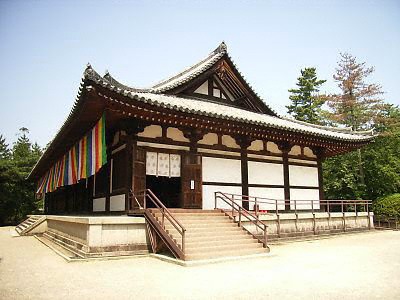
Toshodai Temple
Toshodai Temple was founded in the year of?759 under the instruction of Ganjin, a Chinese priest who was invited to Japan by the emperor in order to train priests and improve Japanese Buddhism. Its Golden lecture is considered one of the most dedicated world agriculture. -
-
-
-
-
-
-
source
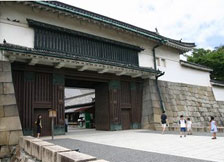 KYOTO
KYOTONijo Castle
Nijo Castle was built in 1603 as the Kyoto residence of Tokugawa Ieyasu, the first shogun of the Edo Period (1603-1867).
Kinkakuji Temple
(Golden Pavilion)
The Golden Pavilion was built in 1397 and burned twice and was reconstructed after five years.
Kiyomizu Temple
Kiyomizu temple was first constructed during the early part of the Heian period and is believed to date back on the year 768. -

Fushimi Inari Shrine
It is famous for its thousands of vermilion torii gates, which straddle a network of trails behind its main buildings.
Kinkakuji Temple
(Golden Pavilion)
The Golden Pavilion was built in 1397 and burned twice and was reconstructed after five years.
Sanjusangendo
Sanjusangendo was built in 1164 by Goshirakawa, the then emperor of Japan. Many national treasures are lying in this shrine.

Kiyomizu Temple
Kiyomizu temple was first constructed during the early part of the Heian period and is believed to date back on the year 768. -
source
Mt. Fuji
Mount Fuji is the highest mountain in Japan at 3,776 m (12,388 ft).
Please note below.
*Mt.Fuji doesn't have snow on the top in summer season.
*5th station is basically closed from Nov. till Mar. because of snow.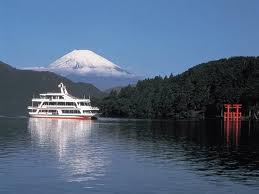
Lake Ashi Cruise
The lake Ashi is known for its views of Mt. Fuji and its numerous hot springs. You can enjoy its beautilful scenary on the cruising ship.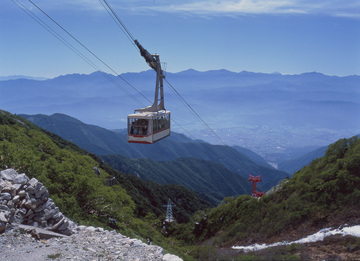
Komagatake Ropeway
Mt.Komagatake is located in the middle of Hakone. Go up Mt.Komagatake taking the Ropeway (aerial lift line), and Lake Ashi and Mt.Fuji are right in front. -
Finally captured, know this guy?
On the run from Tokyo, reported before.